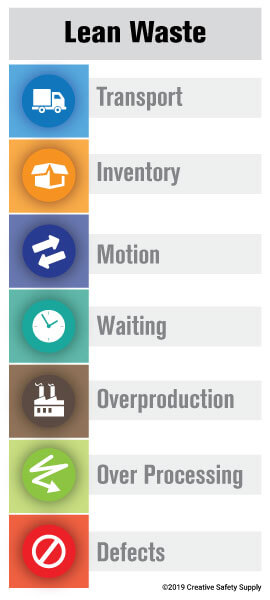
Lean manufacturing is a system used in the manufacturing industry to help identify and eliminate waste. In practice, Lean manufacturing breaks the broad concept of waste into several sub-categories to make it easier to find and remove. Many companies have been able to save a significant amount of time, money, and other resources by using the strategies of Lean manufacturing, which will give them a competitive edge in the industry.
History of Lean Manufacturing
The principles of Lean are derived from the Japanese manufacturing industry in the 1980s. This system first got its name in 1988 when John Krafcik used it in an article entitled, “Triumph of the Lean Production System.” The Toyota Motor Company developed the concepts of Lean manufacturing, and was referred to under the name of ‘The Toyota Way’ where the manufacturing process was improved by focusing on the ‘flow’ of work.
While this is when the concepts that directly developed into Lean manufacturing got their start, the idea of process improvement and waste elimination is actually much older. Industries going back hundreds of years used strategies that can be loosely associated with what we now call Lean can be found.
Types of Waste
The main goal of Lean manufacturing is to eliminate waste and improve efficiency in the workplace. In order to accomplish that goal, waste is broken down into seven different categories. By identifying what type of waste is present, a team can more effectively find ways to reduce or eliminate it from the system. The types of waste are as follows:
- Transport – This is when parts or products are moved unnecessarily. For example, if a part comes out of a machine, it may be moved into a storage area, then the next day, moved to the next machine to continue down the line. By eliminating the need to move that part twice, a significant amount of waste can be removed.
- Inventory – While some level of inventory may be necessary, it is best to only have exactly what is needed at any given time. Lean manufacturing often uses the ‘Just in Time’ production methods to help eliminate this type of waste.
- Motion – The most common example of wasted motion is when a person has to walk from one part of the facility to another to complete their job. It is much more efficient to put all their work in the same physical area (to the extent possible) to avoid this type of waste.
- Waiting – Anytime a person or machine has to wait for another process to complete in order to do work, it is wasteful. Lean manufacturing encourages a process where everything is able to consistently work without waiting.
- Overproduction – Producing more of a product than is needed is wasteful, and often results in having to sell those products at a discount.
- Over Processing – It can be tempting to add features and options to products that are nice, but customers won’t actually pay for. This is a type of over production that can be quite costly.
- Defects – Defects in the production process cause waste by either having to discard the product, or needing to rework it. Putting in safeguards to prevent defects can help to dramatically reduce waste.
While Lean manufacturing strategies can take some time and effort to implement, they are well worth the effort. In the end, a Lean company is going to have significant advantages over a business that doesn’t have an effective waste reduction strategy in place.
Similar Questions
- How does Lean manufacturing eliminate waste?
- Which automobile company initialized Lean manufacturing?
- What are the 7 (or 8) wastes of Lean manufacturing?
- What is the difference between Lean Manufacturing and Six Sigma?
- What are principles of Lean manufacturing?
- What do the letters in the acronym DOWNTIME refer to in Lean Methodology?
- What is the Definition of Lean Manufacturing?
- What are Lean manufacturing tools?
- What is the Lean manufacturing process?

